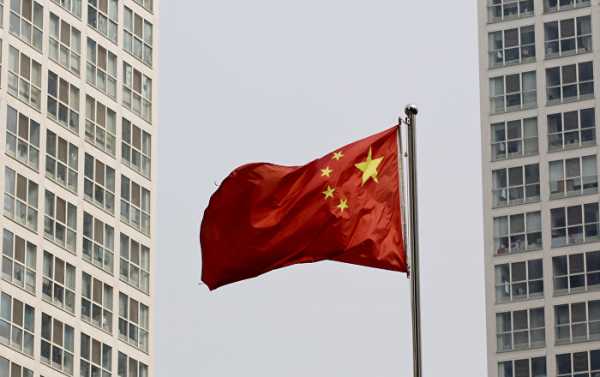
Mainland China’s central economic planning agency says it’s aware of the mounting risks to GDP growth and financial stability in the wake of trade war with the US – but the regulator remains confident that most acute risks can be tackled before they cause too much harm.
Kristian Rouz — Mainland China acknowledges the mounting risks facing its economy in the second half of this year, with the central government’s planning agency vowing to address both trade-related challenges and domestic structural woes.
China’s National Development and Reform Commission (NDRC) said in a statement that it would ramp up its efforts to achieve the goals of economic development, diversification, and sustainability.
The NDRC said trade tensions with the US might pose a challenge to GDP growth this year, but its real-time revision of economic planning would allow for the mitigation of the most acute risks.
“Targets in economic growth, employment, inflation and exports and imports can be achieved through effort,” NDRC Chairman He Lifeng said. “But to achieve growth goals in consumption, outstanding total social financing and urban disposable income will require more effort.”
The NDRC said higher government spending on infrastructure, along with support for small business lending, could help sustain yearly economic growth at 6.5 percent in 2018, with a potential to overshoot this target if the looming risks turn out to be less significant.
At the same time, the NDRC said the central government needs to take additional measures aimed at supporting domestic consumption. This, the state planner said, would allow for the easing of the dependence of China’s manufacturers and the services sector on export revenues.
Additionally, the NDRC said increased financing for social projects could boost the disposable incomes of Chinese households. This is particularly important in the light of Beijing’s ongoing effort to rebalance its economy towards a domestic-driven expansion model.
Meanwhile, China is facing the challenges of elevated costs of financing and refinancing. Moreover, the prominent role of shadow banking adds to concerns about the longer-term sustainability of China’s regional governments and non-financial sector enterprises.
While these factors weigh on the economy from the inside, the prospect of lost foreign trade revenues due to the trade dispute with the US adds to the pressure from overseas. Beijing said it is aware of the already-heightened levels of debt among China’s regional and local governments — but the NDRC appears to have a solution.
Additionally, the NDRC said it would address the imbalances in China’s property market — where skyrocketing prices in both residential and commercial real estate have stirred bubble concerns.
“China is determined to resolve problems with the property market… and resolutely curb rises in property prices,” NDRC’s he said.
The state planner also stressed that support for domestic demand is its key priority, as it could alleviate some of the leverage concerns.
If the central government’s fiscal stimulus helps spur business and consumer activity at home, the majority of Chinese companies could start to gradually reduce their exposure to debt, while at the same time replacing their foreign sources of revenues with domestic ones.
Beijing is expecting retail sales to expand at its 10-percent annual target this year, and policymakers hope domestic consumption will keep its momentum into the coming years as well.
However, official statistics have only shown 10-percent (annualized) growth in retail for just one month this year so far, while the overall pace of expansion has been at its slowest in 15 years.
“There are greater headwinds in the second half this year with some targets under threat,” Julian Evans-Pritchard of Capital Economics said. “But I don’t get from today’s statement that they have decisively moved to the easing direction.”
The NDRC said protecting the current levels of employment is its’ other goal. The agency highlighted the importance of continued job-creation to the effective purchasing power of the nation’s consumers.
The state planner said it’s monitoring price levels across all categories of consumer goods, as a possible decline in foreign trade volumes could produce a spike in inflation.
The NDRC Chairman also said Beijing would pursue other trade opportunities overseas and an additional effort into diversifying its export markets.
verall, the NDRC’s statement suggests Mainland China is gradually advancing its own supply-side reform through fiscal stimulus — a similar approach to that of the Trump administration in the US.
The main difference is China’s planned economy supposedly allows Beijing to react to certain challenges quicker and more efficiently. However, the risks of mismanagement, corruption, and misallocation of funds might be greater in China as well, particularly in areas where a conventional free-market economy could balance itself out.
Sourse: sputniknews.com






